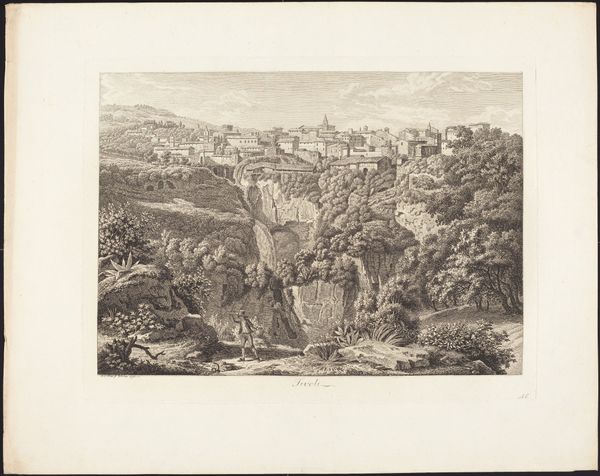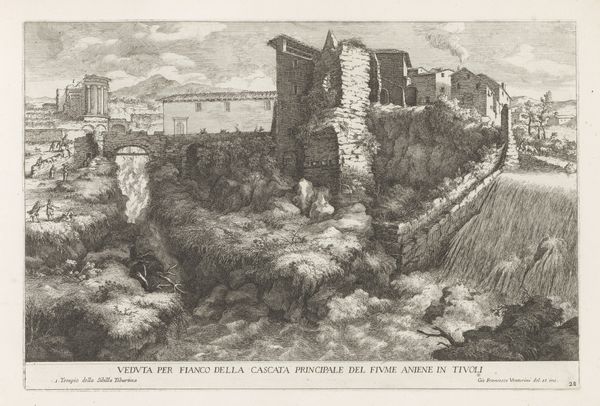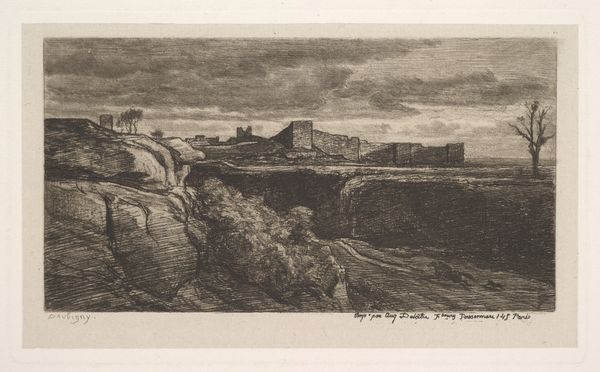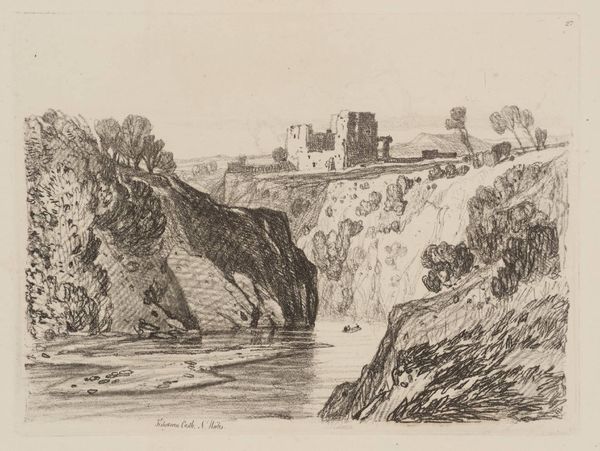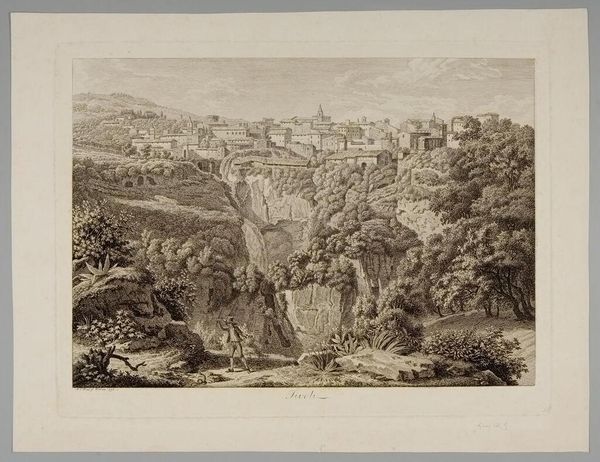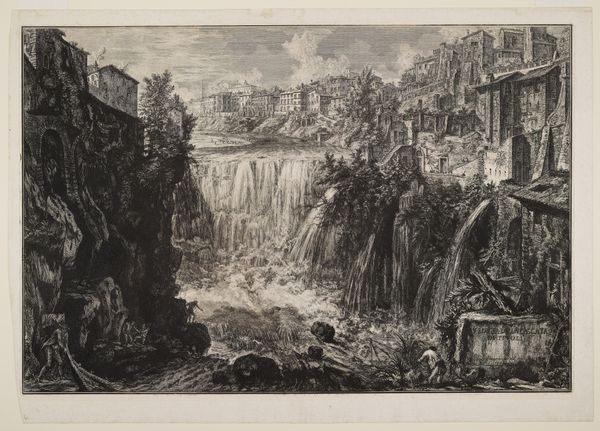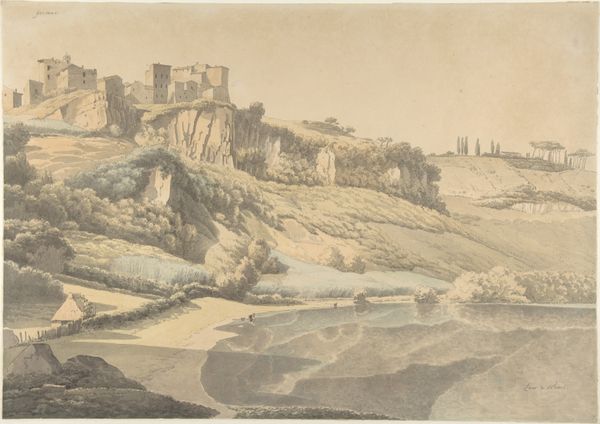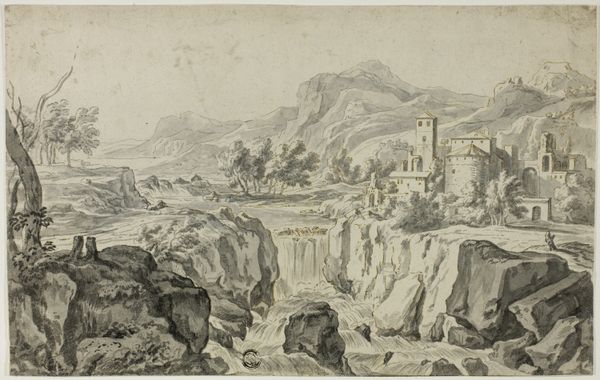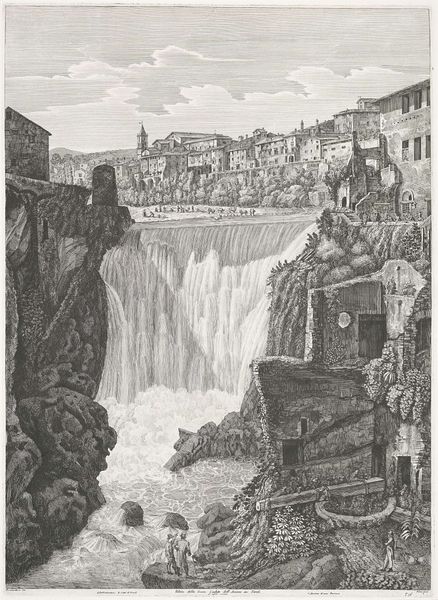
etching, engraving
#
baroque
#
etching
#
old engraving style
#
landscape
#
cityscape
#
engraving
Dimensions: height 228 mm, width 346 mm
Copyright: Rijks Museum: Open Domain
Curator: This is "Waterfall in the Aniene River at Tivoli," an etching created by Giovanni Francesco Venturini sometime between 1653 and 1691. Editor: The detail is remarkable. You can almost feel the mist rising from the falls, and hear the roar of the water, despite it all being etched lines. It's a romantic vision, almost a stage set. Curator: Absolutely. These kinds of images were part of a larger trend – a burgeoning market for picturesque views that depicted Italian landscapes as both beautiful and historically significant, almost trophies for wealthy travelers on the Grand Tour. Editor: I'm immediately drawn to the process, the meticulous labour involved in creating such intricate lines on the copper plate. Imagine the number of hours! And consider the economy supporting the workshops of printmakers, such as Venturini. Each line meticulously placed; how might they reflect the social structures or constraints placed upon those that craft them? Curator: That's fascinating to consider. Venturini and other printmakers really helped shape perceptions and popularize the Baroque aesthetic, extending artistic influence beyond the confines of the elite and major cities through these portable images. The imagery romanticizes labor and power too. Look at the foreground figures contrasted against the architectural immensity in the background. Editor: Speaking of those figures, it's interesting how they're integrated into the landscape – not as dominating figures, but almost part of the scene. The materials are doing as much work for meaning, perhaps even more, as the figures and architectural forms. Curator: They certainly highlight the sublime aspect of nature, the humbling power of the falls juxtaposed with human activity. It's a reminder of the era's evolving relationship between humans and the environment, often visualized for those who’d most likely not see Tivoli with their own eyes. Editor: To view this, then, becomes an interesting sort of work of cultural ingestion. And from a raw material like copper, shaped by labor, to that cultural construction? Quite a chain of production. It all feels designed to circulate specific notions about landscape, labor, and social hierarchy. Curator: Yes, it’s a compelling snapshot of how art disseminated culture in early modern Europe. Editor: Absolutely, I won't look at waterfalls the same way!
Comments
No comments
Be the first to comment and join the conversation on the ultimate creative platform.

